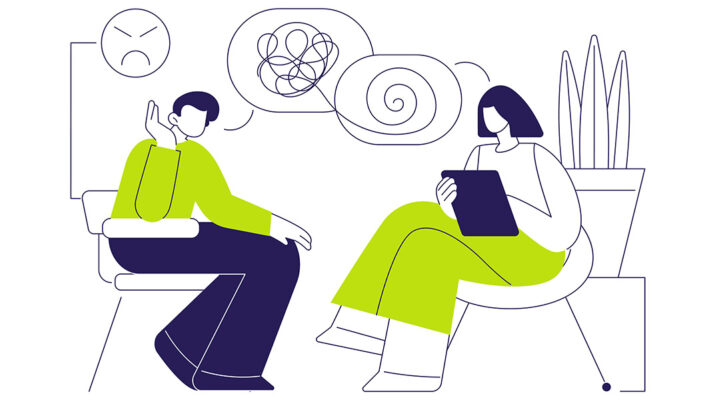What’s it like to provide these services to clients?
By Deborah Jeanne Sergeant
Working as a substance abuse counselor or therapist means treating clients with therapy relating to issues such as alcoholism and drug dependency.
Providers may work in a mental health facility, community health office, private practice or in an institutional setting.
The degree required varies by setting and the job’s specifications. However, most people in this line of work have at least a bachelor’s degree and if they’re working heavily in mental health, a master’s degree in something such as social work with a credential such as licensed clinical social worker with additional certification in substance abuse.
The greater level of education, the greater autonomy for practicing and the higher the salary. People credentialed to work in substance abuse must complete 36 credit hours of continuing education every three years to maintain their credential.
According to the Bureau of Labor Statistics, the projected growth in this field should increase by 19% between 2023 and 2033, a rate much faster than average for all other occupation. This means an additional 48,900 new openings annually, a figure that includes replacing workers who are retiring or changing careers and meeting growing demand for services.
The pay rate depends upon where the provider practices. According to the bureau’s May 2024 figures, hospital-based workers topped the median annual salary at $61,930, followed by offices of other health practitioners ($59,570); outpatient mental health and substance abuse centers ($58,200); individual and family services ($57,080); and residential mental health and substance abuse facilities ($49,610).
Samantha Andrews, licensed mental health counselor with Rochester Regional Health, earned an advanced certification as an alcohol and substance abuse counselor so she could provide counseling to people with substance abuse problems. She felt drawn to the field because as an intern, she saw people who were really struggling yet “still showed up for themselves in a capacity that not a lot of people are able to do,” Andrews said. “They could be vulnerable. You can see a person grow in small ways I can’t measure, but you know it when you see it.”
In addition, the work varies considerably. Her clientele comes from all sorts of backgrounds and Andrews finds herself wearing many different hats, including addiction counselor and case manager.
The biggest challenges include breaking down barriers to recovery — and it’s not just barriers to receiving care.
“There’s the Department of Human Services, the legal system, housing systems, Child Protection Services: all these systems that we have to work with and one of the barriers that is our role and ethics and perspective won’t be the same as probation’s or the housing systems with regard to affordable housing. We have different roles and perspectives. We see one side of a person and we’re trying to support them but other systems have rules and regulations that add barriers for people who are struggling with addiction. There are other struggles like mental health and chronic illness that don’t meet with those barriers.”
In addition to these barriers, some patients face another challenge: the stigma regarding addiction and recovery, even for those seeking treatment. Andrews said that once someone has experienced addiction, they tend to feel like that defines them.
At first, “we have to show up for people more than they show up for themselves,” Andrews added. “It’s hard because you care so much and you want them to see them for who they are. I wish I could help that person get to that point and it can be really hard. We deal with a lot of people in crisis and sometimes that can be difficult in that there isn’t anything else we can do. If someone is homeless, there are only so many beds in a shelter or in an in-patient facility.”
Despite these challenges, Andrews enjoys being part of a person’s recovery story.
“I like that I was able to be there for people and support them,” she said. “It’s an honor to have someone let me in and support them. It’s fulfilling.”
Diane J. Fauth, a licensed mental health counselor in private practice in Rochester, felt drawn to work in addiction recovery because she knew people with these struggles while she was growing up. She believes that addiction stems from trauma.
“Substance abuse is really pain-based behavior,” Fauth said. “The cravings or desire to use, even though there are so many consequences is your system trying to help alleviate that pain. It’s not the angel-devil, but another part of you says the system is so overwhelmed with shame or suppressed pain from childhood sexual abuse, abuse or people who were ‘different’ because of neurodiversity led to shame.”
She helps clients understand that addiction stems from their system responding to the trauma in their past. Helping clients “get some space” when cravings and despair rise up helps them connect to the pros and cons of their behavior and make better, healthier decisions.
“It gives them a glimmer of hope and changes the critical talk,” Fauth said. “They have a new paradigm and can become curious about the part of them that’s trying to get out of pain.”
The administrative side of her work can be time-consuming. For most clients, she takes nine to twelve-page evaluation reports. However, Fauth has found apps that help streamline the process.
It’s rough seeing some clients slip back into dependency. However, Fauth feels fulfillment when clients open up to mental health therapy and work through their trauma from the past.

